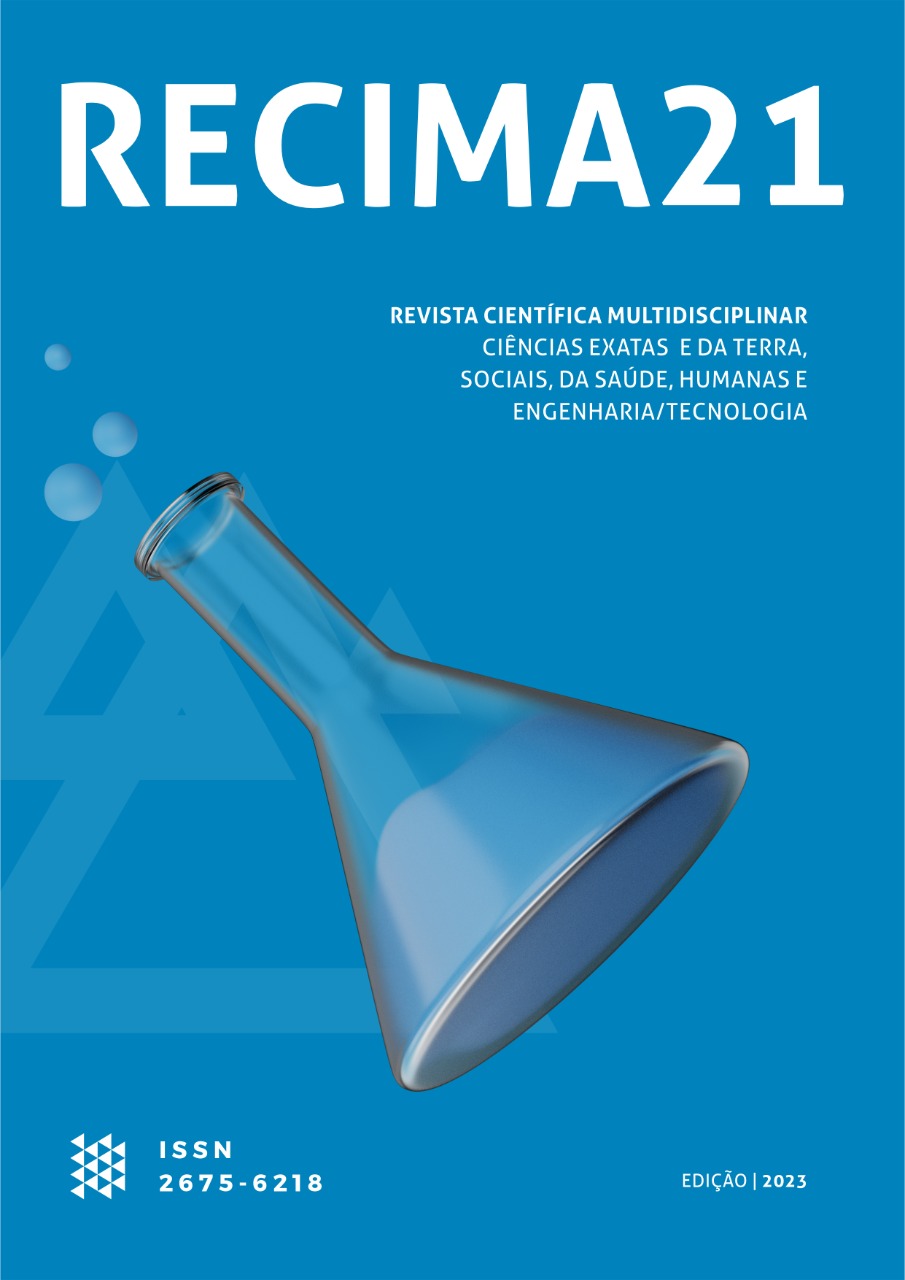EFFECTS OF PRONE POSITION IN ACUTE RESPIRATORY DISTRESS SYNDROME (ARDS)
DOI:
https://doi.org/10.47820/recima21.v4i1.2523Keywords:
prone position, ventral decubitus, acute respiratory distress syndromeAbstract
Objective- This study aims to analyse the effects of the prone position in the treatment of the acute respiratory distress syndrome (ARDS). Methods- A systematic review of the literature based on the Prisma method was done, collecting the studies in the Scientific Electronic Library Online (SciELO) and on the National Center for Biotechnology Information (NCBI) site, on the PubMed database. We included articles related to the effects of the prone position in the treatment of SARA on adult patients that were in mechanical ventilation, published either in Portuguese or English within the years 2016 and 2022.We used the following associations with the boolean operators: Prone Position*AND Acute Respiratory Distress Syndrome NOT COVID*. Results- Among the main effects related to the prone position, these aspects are mentioned: the improvement of the PaO2/FiO2 relation, a homogeneous redistribution of the volume in the lungs, a decrease of the alveolar hyperdistention and the pulmonar colapse, with a consequent increase of the alveolar recruitment among the different areas of the lungs. We noted a difference in pronation time of the patient, varying from 16 to 24 hours. Conclusion- The prone position applied to patients who had acute SARA/SDRA and were mechanically ventilated enabled the improvement of the PaO2/FiO2 relation and other cardiopulmonary benefits. However, it is mandatory to have more studies for the standardization of the application of such technique.
Downloads
References
Sweeney R Mac, McAuley DF. Acute respiratory distress syndrome. Lancet. 2016;388(10058):2416–30.
Oliveira RHR, Basille A-F. Incidência de lesão pulmonar aguda e síndrome da angústia respiratória aguda no centro de tratamento intensivo de um hospital universitário: um estudo prospectivo. J. Bras. Pneumol. 2006;32(1):35–42.
Estenssoro E, Dubin A. Síndrome de Distrés Respiratorio Agudo. Medicina (B. Aires). 2016;76(4):235–41.
Ambrosino N, Makhabah DN. Comprehensive physiotherapy management in ARDS. Minerva Anestesiol. 2013;79(5):554–63.
Munshi L, Sorbo L Del, Adhikari NKJ, Hodgson CL, Wunsch H, Meade MO, et al. Prone position for acute respiratory distress syndrome: A systematic review and meta-analysis. Ann. Am. Thorac. Soc. 2017;14(4):280–88.
Paiva KC de A, Beppu OS. Posição prona. J. Bras. Pneumol. 2005;31(4):332–40.
Borges DL, Rapello GVG, Andrade FMD de. Posição prona no tratamento da insuficiência respiratória aguda. Assoc. Bras. Fisioter. Cardiorrespiratória e Fisioter. em Ter. Intensiva. 2020;s/v(s/n):1–7.
Barbas CSV, Ísola AM, Farias AM de C. Diretrizes Brasileiras de Ventilação Mecânica. 1a. São Paulo- SP: ed. AMIB e SBPT; 2013.
Hospital-Israelita AE. Diretrizes assistenciais Posição Prona na SDRA. Hosp. Isr. Albert Einstein. 2010;1–3.
Liberati A, Altman DG, Tetzlaff J, Mulrow C, Gøtzsche PC, Ioannidis JPA, et al. The PRISMA statement for reporting systematic reviews and meta-analyses of studies that evaluate health care interventions: Explanation and elaboration. PLoS Med. 2009;6(7):1–28.
Aguirre-Bermeo H, Turella M, Bitondo M, Grandjean J, Italiano S, Festa O, et al. Lung volumes and lung volume recruitment in ARDS: a comparison between supine and prone position. Ann. Intensive Care. 2018;8(1):1–9.
Dalla Corte F, Mauri T, Spinelli E, Lazzeri M, Turrini C, Albanese M, et al. Dynamic bedside assessment of the physiologic effects of prone position in acute respiratory distress syndrome patients by electrical impedance tomography. Minerva Anestesiol. 2020;86(10):1057–64.
Guérin C, Beuret P, Constantin JM, Bellani G, Garcia-Olivares P, Roca O, et al. A prospective international observational prevalence study on prone positioning of ARDS patients: the APRONET (ARDS Prone Position Network) study. Intensive Care Med. 2018;44(1):22–37.
Jochmans S, Mazerand S, Chelly J, Pourcine F, Sy O, Thieulot-Rolin N, et al. Duration of prone position sessions: a prospective cohort study. Ann. Intensive Care. 2020;10(1):1–9.
Kao KC, Chang KW, Chan MC, Liang SJ, Chien YC, Hu HC, et al. Predictors of survival in patients with influenza pneumonia-related severe acute respiratory distress syndrome treated with prone positioning. Ann. Intensive Care. 2018;8(1):1–9.
Khan F, Fistler CR, Mixell J, Caplan R, Vest MT. Community Experience With Acute Respiratory Distress Syndrome in the Prone Position. Crit. Care Explor. 2019;1(12):1–5.
Hadaya J, Benharash P. Prone Positioning forAcuteRespiratory Distress Syndrome(ARDS). J. Am. Med. Assoc. 2020;323(22):2329–30.
Gattinoni L, Taccone P, Carlesso E, Marini JJ. Prone Position in Acute Respiratory Distress Syndrome - Rationale, indications and limits. Am. J. Respir. Crit. Care Med. 2013;188(11):1286–93.
Gattinoni L, Busana M, Giosa L, Macrì MM, Quintel M. Prone Positioning in Acute Respiratory Distress Syndrome. Semin. Respir. Crit. Care Med. 2019;40(1):94–100.
Downloads
Published
Issue
Section
Categories
License
Copyright (c) 2023 RECIMA21 - Revista Científica Multidisciplinar - ISSN 2675-6218

This work is licensed under a Creative Commons Attribution 4.0 International License.
Os direitos autorais dos artigos/resenhas/TCCs publicados pertecem à revista RECIMA21, e seguem o padrão Creative Commons (CC BY 4.0), permitindo a cópia ou reprodução, desde que cite a fonte e respeite os direitos dos autores e contenham menção aos mesmos nos créditos. Toda e qualquer obra publicada na revista, seu conteúdo é de responsabilidade dos autores, cabendo a RECIMA21 apenas ser o veículo de divulgação, seguindo os padrões nacionais e internacionais de publicação.













